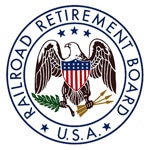Just after midnight on April 11, BNSF Railway LCA Secretary and Local Trustee Carlos Barela sustained life-threatening injuries while switching in the Belen Yard in New Mexico.
Local 1168 Local Chairperson Tanner Griffitt and other local chairpersons have organized a GoFundMe account on Barela’s behalf. The page states that due to the severity of his injuries that Brother Barela may never be able to work or provide for himself or his family again.
Click here to visit the GoFundMe page.
Author: amyr
Nevada State Legislative Director Jason Doering and his BLET counterpart Matthew Parker explain why two-person crews are necessary in an op-ed on the website of The Nevada Independent.
In the article, Doering and Parker refute some of the carriers’ most common arguments as to why two-person crews should not be legislated. They specifically mention a letter in support from Larry Mann, who helped to draft the Federal Railroad Safety Act of 1970 and is SMART TD’s rail safety coordinator to the designated legal counsel.
“‘The FRSA has been in existence since 1970, and no court has ever ruled that collective bargaining agreements or any rights under the Railway Labor Act preempted a safety law,’ Mann wrote. … Mann pointed out that Wisconsin enacted two-person crew legislation in 1997 and had the law challenged by four rail carriers. The law was upheld in 1999 by the 7th Circuit Court of Appeals.”
The Assembly Growth and Infrastructure committee recently voted on April 11 to send Assembly Bill 337, the state’s two-person crew bill, to the Assembly floor and recommended that it be passed as amended.
Click here to read the rest of the article from The Nevada Independent.

The following questions and answers show the differences in Railroad Retirement and Social Security benefits payable at the close of the fiscal year ending Sept. 30, 2018. They also show the differences in age requirements and payroll taxes under the two systems.
1. How do the average monthly Railroad Retirement and Social Security benefits paid to retired employees and spouses compare?
The average age annuity being paid by the Railroad Retirement Board (RRB) at the end of fiscal year 2018 to career rail employees was $3,525 a month, and for all retired rail employees, the average was $2,815. The average age retirement benefit being paid under Social Security was approximately $1,415 a month. Spouse benefits averaged $1,035 a month under Railroad Retirement compared to $720 under Social Security.
The Railroad Retirement Act also provides supplemental Railroad Retirement annuities of between $23 and $43 a month, which are payable to employees who retire directly from the rail industry with 25 or more years of service.
2. Are the benefits awarded to recent retirees generally greater than the benefits payable to those who retired years ago?
Yes, because recent awards are based on higher average earnings. Age annuities awarded to career railroad employees retiring in fiscal year 2018 averaged about $4,175 a month, while monthly benefits awarded to workers retiring at full retirement age under Social Security averaged nearly $1,915. If spouse benefits are added, the combined benefits for the employee and spouse would total $5,815 under Railroad Retirement coverage, compared to $2,875 under Social Security. Adding a supplemental annuity to the railroad family’s benefit increases average total benefits for current career rail retirees to about $5,850 a month.
3. How much are the disability benefits currently awarded?
Disabled railroad workers retiring directly from the railroad industry in fiscal year 2018 were awarded $3,050 a month on average, while awards for disabled workers under Social Security averaged $1,340.
While both the Railroad Retirement and Social Security Acts provide benefits to workers who are totally disabled for any regular work, the Railroad Retirement Act also provides disability benefits specifically for employees who are disabled for work in their regular railroad occupation. Employees may be eligible for such an occupational disability annuity at age 60 with 10 years of service, or at any age with 20 years of service.
4. Can railroaders receive benefits at earlier ages than workers under Social Security?
Railroad employees with 30 or more years of creditable service are eligible for regular annuities based on age and service the first full month they are age 60, and rail employees with less than 30 years of creditable service are eligible for regular annuities based on age and service the first full month they are age 62.
No early retirement reduction applies if a rail employee retires at age 60 or older with 30 years of service and his or her retirement is after 2001, or if the employee retired before 2002 at age 62 or older with 30 years of service.
Early retirement reductions are otherwise applied to annuities awarded before full retirement age, the age at which an employee can receive full benefits with no reduction for early retirement. This ranges from age 65 for those born before 1938 to age 67 for those born in 1960 or later, the same as under Social Security.
Under Social Security, a worker cannot begin receiving retirement benefits based on age until age 62, regardless of how long he or she worked, and Social Security retirement benefits are reduced for retirement prior to full retirement age regardless of years of coverage.
5. Can the spouse of a railroader receive a benefit at an earlier age than the spouse of a worker under Social Security?
If a retired railroad employee with 30 or more years of service is age 60, the employee’s spouse is also eligible for an annuity the first full month the spouse is age 60.
Certain early retirement reductions are applied if the employee first became eligible for a 60/30 annuity July 1, 1984, or later, and retired at ages 60 or 61 before 2002. If the employee was awarded a disability annuity, has attained age 60 and has 30 years of service, the spouse can receive an unreduced annuity the first full month she or he is age 60, regardless of whether the employee annuity began before or after 2002, as long as the spouse’s annuity beginning date is after 2001.
To qualify for a spouse’s benefit under Social Security, an applicant must be at least age 62, or any age if caring for a child who is entitled to receive benefits based on the applicant’s spouse’s record.
6. Does Social Security offer any benefits that are not available under Railroad Retirement?
Social Security does pay certain types of benefits that are not available under Railroad Retirement. For example, Social Security provides children’s benefits when an employee is disabled, retired or deceased. Under current law, the Railroad Retirement Act only provides children’s benefits if the employee is deceased.
However, the Railroad Retirement Act includes a special minimum guaranty provision which ensures that railroad families will not receive less in monthly benefits than they would have if railroad earnings were covered by Social Security rather than Railroad Retirement laws. This guaranty is intended to cover situations in which one or more members of a family would otherwise be eligible for a type of Social Security benefit that is not provided under the Railroad Retirement Act. Therefore, if a retired rail employee has children who would otherwise be eligible for a benefit under Social Security, the employee’s annuity can be increased to reflect what Social Security would pay the family.
7. How much are monthly benefits for survivors under Railroad Retirement and Social Security?
Survivor benefits are generally higher if payable by the RRB rather than Social Security. At the end of fiscal year 2018, the average annuity being paid to all aged and disabled widow(er)s was $1,705 a month, compared to $1,305 under Social Security.
Benefits awarded by the RRB in fiscal year 2018 to aged and disabled widow(er)s of railroaders averaged nearly $2,185 a month, compared to approximately $1,265 under Social Security.
The annuities being paid at the end of fiscal year 2018 to widowed mothers/fathers averaged $1,900 a month and children’s annuities averaged $1,110, compared to $985 and $860 a month for widowed mothers/fathers and children, respectively, under Social Security.
Those awarded in fiscal year 2018 averaged $2,200 a month for widowed mothers/fathers and $1,350 a month for children under Railroad Retirement, compared to $960 and $855 for widowed mothers/fathers and children, respectively, under Social Security.
8. How do Railroad Retirement and Social Security lump-sum death benefit provisions differ?
Both the Railroad Retirement and Social Security systems provide a lump-sum death benefit. The Railroad Retirement lump-sum benefit is generally payable only if survivor annuities are not immediately due upon an employee’s death. The Social Security lump-sum benefit may be payable regardless of whether monthly benefits are also due. Both Railroad Retirement and Social Security provide a lump-sum benefit of $255. However, if a railroad employee completed 10 years of creditable railroad service before 1975, the average Railroad Retirement lump-sum benefit payable is $1,020. Also, if an employee had less than 10 years of service, but had at least 5 years of such service after 1995, he or she would have to have had an insured status under Social Security law (counting both Railroad Retirement and Social Security credits) in order for the $255 lump-sum benefit to be payable.
The Social Security lump sum is generally only payable to the widow(er) living with the employee at the time of death. Under Railroad Retirement, if the employee had 10 years of service before 1975, and was not survived by a living-with widow(er), the lump sum may be paid to the funeral home or the payer of the funeral expenses.
9. How do Railroad Retirement and Social Security payroll taxes compare?
Railroad Retirement payroll taxes, like Railroad Retirement benefits, are calculated on a two-tier basis. Rail employees and employers pay Tier I taxes at the same rate as Social Security taxes, 7.65 percent, consisting of 6.20 percent for retirement on earnings up to $132,900 in 2019, and 1.45 percent for Medicare hospital insurance on all earnings. An additional 0.9 percent in Medicare taxes (2.35 percent in total) will be withheld from employees on earnings above $200,000.
In addition, rail employees and employers both pay Tier II taxes which are used to finance Railroad Retirement benefit payments over and above Social Security levels.
In 2019, the Tier II tax rate on earnings up to $98,700 is 4.9 percent for employees and 13.1 percent for employers.
10. How much are regular Railroad Retirement taxes for an employee earning $132,900 in 2019 compared to Social Security taxes?
The maximum amount of regular Railroad Retirement taxes that an employee earning $132,900 can pay in 2019 is $15,003.15, compared to $10,166.85 under Social Security. For railroad employers, the maximum annual regular retirement taxes on an employee earning $132,900 are $23,096.55, compared to $10,166.85 under Social Security. Employees earning over $132,900, and their employers, will pay more in retirement taxes than the above amounts because the Medicare hospital insurance tax is applied to all earnings.
Yesterday (April 10), H.B. 186 was referred to the House Transportation and Public Safety Committee. State Rep. Michael Sheehy, who introduced the bill, sits on the committee as the ranking member. Three other co-sponsors of the bill are also on the committee.
SMART Transportation Division Ohio State Legislative Director Stu Gardner is urging all Ohio members and their families to contact members of the committee to voice your support and ask them to support the bill. Gardner has set up a link on the Ohio Legislative Action Center for members to contact their representatives. Just click the ‘Take Action’ button and it will walk you through sending your message.
Members are also urged to call the members of the Transportation and Public Safety Committee, which are listed below.
- Chairman – Doug Green (R – Dist. 66) – 614-644-6034
- Vice Chair – Riordan McClain (R – Dist. 87) – 614-644-6265
- Ranking Minority Member – Michael Sheehy (D – Dist. 46) – 614-466-1418
- Steven Arndt (R – Dist. 89) – 614-644-6011
- Juanita Brent (D – Dist. 12) – 614-466-1408
- James Hoops (R – Dist. 81) – 614-466-3760
- Stephanie Howse (D – Dist. 11) – 614-466-1414
- Michele Lapore-Hagan (D – Dist. 58) – 614-466-9435
- Don Jones (R – Dist. 95) – 614-644-8728
- Susan Manchester (R – Dist. 84) – 614-466-6344
- Gayle Manning (R – Dist. 55) – 614-644-5076
- Jessica Miranda (D – Dist. 28) – 614-466-8120
- Michael O’Brien (D – Dist. 64) – 614-466-5358
- Tom Patton (R – Dist. 07) – 614-644-4895
- Reggie Stoltzfus (R – Dist. 50) – 614-466-9078
Click here for the Ohio Legislative Action Center.
Original Story (04/08/19):
SMART Transportation Division Ohio State Legislative Director Stu Gardner reports that a two-person crew bill has been introduced in the state’s House of Representatives. H.B. 186 was introduced April 4 by state Reps. Michael Sheehy (D – Dist. 46) and Brett Hillyer (R – Dist. 98). The bipartisan bill has 22 co-sponsors.
The bill includes wording that legislates two-person crews, blocked crossings, proper lighting in rail yards and proper walkways.
“The hard work is just beginning,” Gardner said in a call to action to Ohio members, families and retirees. “In the days and weeks to come, we will need the help and support of our members, retirees, spouses, friends and relatives, and you — our grassroots advocates.”
Gardner urges members, retired members and their families to do all they can to step forward and show support by attending meetings when H.B. 186 comes up for discussion.
“We will need proponents that would be willing to testify before the committee to demonstrate their knowledge and passion for these issues,” Gardner said.
There’s already one proponent in the statehouse who is more than familiar with the need for this legislation. Sheehy, is a SMART TD Alumni Association member who retired in 2012 and served as secretary and treasurer of Local 1816 (Toledo, Ohio).
As the bill has just been introduced, it has not yet been referred to committee, but Gardner will post further calls to action on the Ohio State Legislative Board’s website.
Ohio residents can visit this link to show their support for the legislation.
Click here to read H.B. 186.
The sons of member Byron Watson have been labeled as heroes after saving a 4-year-old girl from drowning while at a birthday party March 24 at the Santa Maria Beach in Santa Cruz, California.
The boys’ mother, Nicole, who was watching over her boys while they were swimming in the ocean, recounted the story.
“I was watching my boys, but I looked away for a second and missed the boys seeing her drown. Rhys – he’s 7 – said ‘I think that girl is drowning’ to Bryce, who is now 11, and Bryce said, ‘No she’s just playing.’ And Rhys said, ‘No, I saw her head go underwater.’ And that’s when Bryce jumped in the water. I saw my-then-10-year-old holding this girl above his head in the water and I saw this man, the girl’s father, running, and he patted her on the back and water started coming out of her mouth.”
Both Byron and Nicole are really proud of the action their boys took.
“I’m very proud of my boys. We try to instill in them the ability to care for others, and that’s what determined the actions that they took. They live that out daily,” Byron said.
“I’m super proud. I’m really proud of them and they’re really proud of each other. I’m really proud that they were able to remain calm — they get that from their father — and save the girl,” Nicole said. “Bryce has a new-found confidence in himself, so that’s really cool.”
The 4-year-old girl (her name has not been released) was expected to make a full recovery thanks to both boys.
Byron reports that both boys learned to swim when they were about 6 months old. Byron is a bus operator for the Santa Cruz Metropolitan Transit District and a member of Santa Cruz Local 23 since 2006.
John D. Whitaker III has been elevated to vice president from alternate vice president after Vice President David B. Wier retired April 1.
Whitaker’s railroad career began in 1997 when he hired out as a conductor with CSX Transportation. In 2002, he was certified as an engineer. In that same year, Whitaker decided to take a more active role in his local and was elected to the position of local chairperson for engineers for Local 1106 in Rocky Mount, N.C.
After gaining four years of experience as local chairperson, he ran for the office of vice general chairperson for CSX General Committee of Adjustment GO-851 and was elected effective January 2006. Whitaker maintained that position through March 2011, at which time he was elected general chairperson for GO-851. In October 2013, Whitaker was appointed as an alternate to the executive board and was elected at the 2014 convention to another term. In December 2014, he was elevated to alternate vice president. He also serves on the board of the SMART TD Association of General Chairpersons (Dist. 1).
SMART TD welcomes Whitaker to his new position and looks forward to working with him in this capacity.
Wier began his railroad career in 1974 as a trainman for TRRA of St. Louis. He later became an engineer.
A member of Local 469 in Granite City, Ill., Wier was elected three times by acclamation as general chairperson of G0-919. As general chairperson, he successfully negotiated yard trip rates on the TRRA and led the UTU in two successful representation elections on the TRRA of St. Louis and Manufacturers Railway.
In 2003, Wier was elected to the position of first alternate vice president east. At the 2007, 2001 and 2014 conventions he was elected to the position of vice president. Wier has also served on the board of directors since 2009 and served on the SMART General Executive Council.
He is most well known for his dedication in successfully negotiating more than 50 agreements, a lot of which have been designed to bridge the gap between pre- and post-85 members.
SMART TD thanks Wier for his service to the union and wishes him a long, happy and healthy retirement.
The state of Maryland is one step closer to having a two-person crew law on the books.
H.B. 66 passed both houses of the state General Assembly and now heads to Gov. Larry Hogan’s desk for consideration. The bill passed the state House with 102 voting yea, 30 voting nay, four not voting, one excused and four absent. H.B. 66 passed the state Senate with 32 voting for the bill, 13 against and two absent.
The fight for two-person crews is not over yet. When a two-person crew bill was passed by legislators and reached Hogan’s desk for signing last year, he vetoed it. This time around, the bill has enough support to override a veto, but any override vote cannot take place until January 2020.
“Again this year the Maryland General Assembly overwhelmingly passed, in a bipartisan manner, our rail safety bill that requires a minimum of two persons on certain freight trains operating in Maryland. The legislature recognizes the importance of safe rail operations and they are not willing to leave safety to chance,” SMART Transportation Division Maryland State Legislative Director Larry Kasecamp said.
“Following the governor’s veto of the legislation last year, our board secured a reputable polling firm to conduct a survey on where the citizens of Maryland stood on this issue. An overwhelming 88 percent of those polled supported a minimum two-person freight crew standard.
“Hopefully the governor will side with the vast majority of legislators and the citizens of Maryland and allow the legislation to become law in Maryland.”
Hogan has 21 days from when the bill reaches his desk to either sign or veto the legislation. If he takes no action, the bill becomes law after the 21-day period.

SOFA reported a total of 17 severe injuries for the fourth quarter, bringing 2018’s annual total to 68. Of those severe injuries reported in the quarter, one resulted in amputation. None of the incidents were fatal.
For the year, there were eight amputations. When combined with the first three SOFA quarterly reports, the group counted three switching-related fatalities in 2018. SMART TD had seven member fatalities last year.
In 2017, SOFA reported 68 severe injuries and nine amputations.
Click here to see the full report.
According to an analysis done by northjersey.com, Metro-North, New Jersey Transit (NJT) and the Long Island Rail Road (LIRR) have been fined hundreds of thousands of dollars since 2013.
Before the companies’ lawyers negotiated for lower fines, Metro-North had been assessed more than $1 million in penalties and NJT more than $700,000. After the fines had been negotiated down, Metro-North paid $859,375; NJT paid $576,175 and LIRR paid $131,725.
Fines were assessed for safety violations involving track, signals, locomotives, equipment and train crews; as well as for alcohol and drug testing, employee hours of service, and railroad operating practices.
Northjersey.com notes that alcohol and drug testing violations — of which Metro-North had the most infractions — does not necessarily mean that crew members are reporting to work under the influence.
Click here to read the full analysis from northjersey.com.
The SMART TD Wyoming State Legislative Board, led by State Director Stan Blake, recently donated $1,000 to the Boys & Girls Club of Sweetwater County, reported Wyo 4 News.
“We are so grateful for Representative Blake for helping us secure this donation. He has been a huge supporter of our Club, and we appreciate his continued support throughout the year. We also like to thank the SMART Union for their generous donation,” Boys & Girls Club of Sweetwater County CEO Lisa Stewart told Wyo 4 News in an interview.
In addition to representing union members, Blake also represents the state of Wyoming in House District 39.
Click here to read more from Wyo 4 News.





